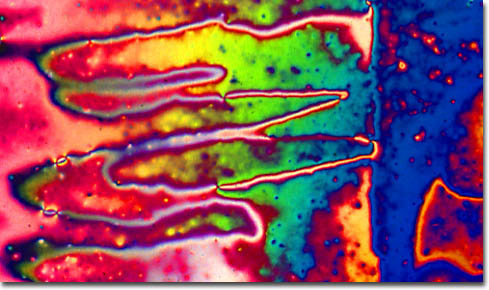|
When an electric or magnetic field is applied to a nematic liquid crystal, the organization of the substance is readily altered. Nematic liquid crystals may, for instance, change from a transparent substance into an opaque one under certain circumstances, a property that makes them very useful in a number of technical devices. Perhaps the best-known use of nematic liquid crystals is the liquid crystal display (LCD), which was first created in 1968 by a group of scientists working under the direction of George Heilmeier at Optel and was greatly improved the following year by James Fergason of Kent State University. LCDs, like those found in the digital watches that were highly popular in the 1980s, do not contain any moving components. Instead, the simple seven-segment numerical displays work through the application of an electric field to the molecules of a liquid crystal, which are trapped between two polarizing sheets. The twisting of the molecules allow light to only pass through certain segments of the display, enabling the formation of the numbers zero through nine.
|
